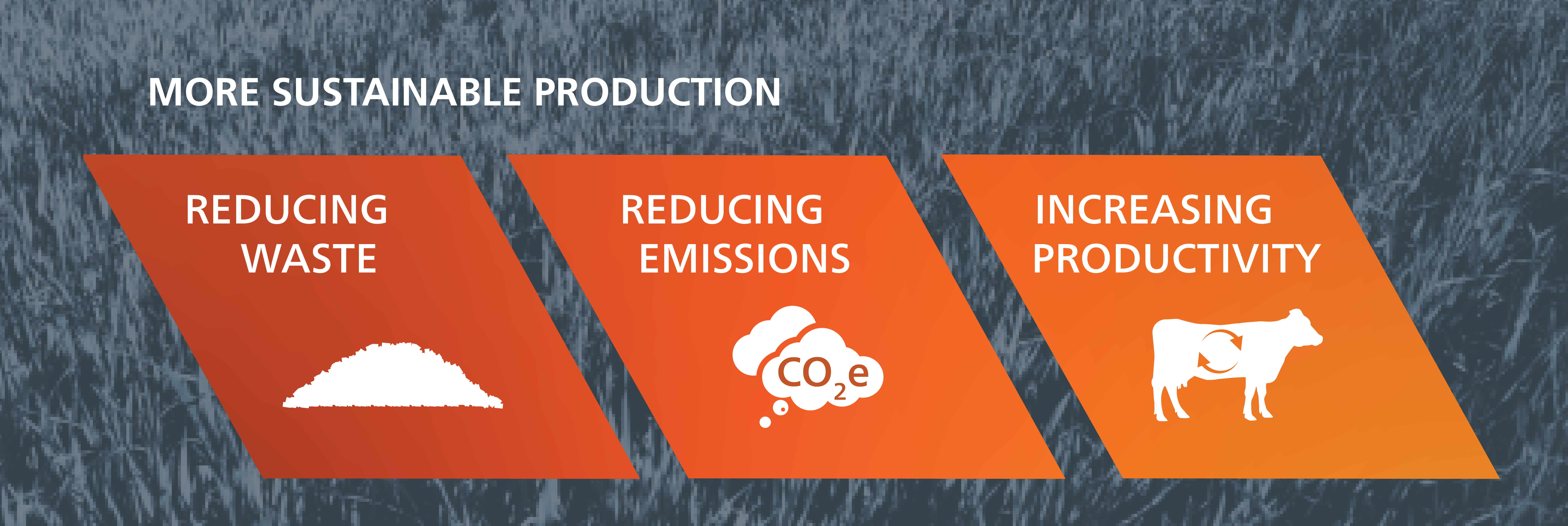
For almost 40 years, Alltech has been focused on finding innovative ways to balance highly efficient and profitable livestock production with the seemingly conflicting objectives of reducing agriculture's environmental impact and meeting consumer demand.
In order to successfully minimise agriculture's footprint, we as an industry, must recognise that the problem is far greater than looking at individual greenhouse gas emissions. To get a more complete picture of a farm's carbon footprint, many different elements must be taken into consideration, including individual systems, production figures, feed use per animal, fertiliser usage, mortality rates, housing, water utilisation and more.
We focus on addressing three key challenges simultaneously:
1. REDUCING WASTE
Feed inputs, both grown and purchased, account for approximately 25 percent of a farm’s carbon footprint. Additionally, feed is typically the single-biggest variable cost and the most under-utilised resource on-farm. The biggest contributor to wastage and sub-optimal efficiency comes from overall feed utilisation; in the field, in storage, at feed-out and by the cow.
Recent studies conducted by Alltech show that, on the average UK dairy farm, 60 percent of variable costs are spent on feed, and 25 - 45 percent of feed potential is lost between the field and the cow. Optimising resource efficiency across each of the four areas mentioned above represents both significant economic savings and environmental benefits, by achieving more from the same inputs while also reducing losses to the environment.
2. REDUCING EMISSIONS
With approximately 85 percent of carbon dioxide in food production being generated at farm-level, agriculture is under increasing pressure to reduce its environmental impact. The first step for producers in reducing farm emissions is to identify the carbon footprint of the farm and the sources of emissions.
A farm’s carbon footprint is the total mass of GHG emissions expressed in terms of kilograms of carbon dioxide equivalent (CO2e) per kilogram of milk or meat produced. This allows separate gases to be quoted together as a single unit of emissions.
More than 60 percent of a typical farm’s carbon footprint is derived from enteric emissions (methane from the rumen) and total feed inputs. Although they only contribute to 11 percent of the total, nitrous oxide emissions from manure and grazing cannot be overlooked, as research suggests that nitrous oxide is 298 times more potent than CO2 while methane is 23 times more potent than CO2.
Once a farm has undertaken an environmental assessment and has identified its footprint, ways to mitigate those emissions will become apparent. For instance, methane and nitrous oxide emissions can be reduced by strategically improving diets and manure management.

3. INCREASING PRODUCTIVITY
With dairy and beef animals, the great challenge is to reduce the amount of carbon equivalents produced while simultaneously increasing production performance. Many available technologies for reducing gaseous emissions do so at the expense of production performance; in reducing methane within the rumen, they can negatively impact rumen microbes. The key to reducing emissions while increasing productivity is to adopt a nutritional strategy that improves the digestive process and bolsters nutrient retention.
Increased animal productivity has been shown to reduce the amount of methane produced per unit of milk or meat.




